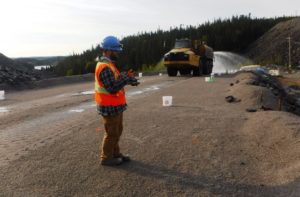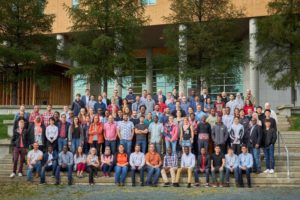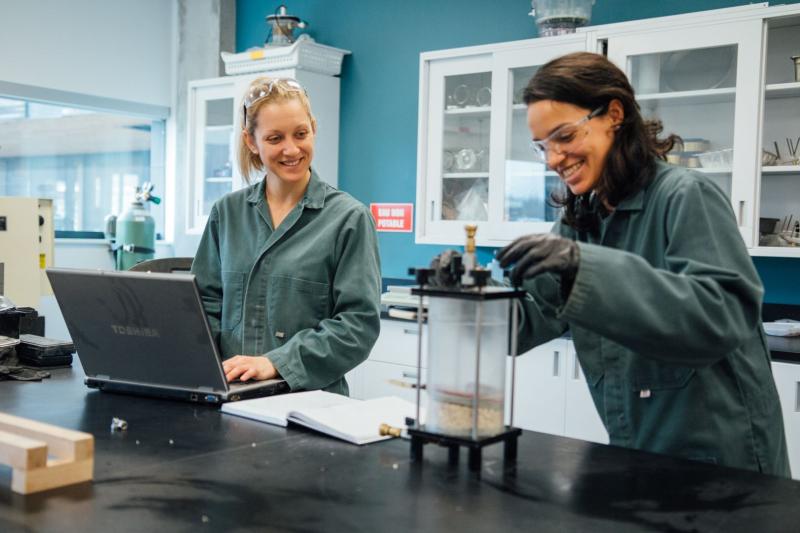As much as we nature lovers shrink in horror at both the immediate damage done by mining, and the decades of continuing contamination flowing from unreclaimed—or poorly-reclaimed—closed mines, the industry show no sign of disappearing. If anything, it’s expanding and a result of the rising human population and the mining-derived products they demand.
So, we desperately need to understand better how to mine in a less-destructive manner, and how to more-effectively restore sites post-mining. Here’s some good news on that front.
Given the growing success of the Research Institute on Mines and Environment (RIME) since its creation in 2013, two universities—the Université du Québec en Abitibi-Témiscamingue (UQAT), the Polytechnique Montréal—and six mining companies—Agnico Eagle Mines, Canadian Malartic Mine, IAMGOLD Corporation, Raglan Mine, Newmont Goldcorp Eleonore, and Rio Tinto Iron and Titanium—announced on November 13, 2019 that they’ll be extending their partnership.
This ensures the continuation of this unique joint research project into circular, regenerative mining practices and teach restoration economy jobs.
 Dedicated to developing environmental solutions for the entire life cycle of a mine, this partnership claims to be bringing significant benefits to the mining industry and society.
Dedicated to developing environmental solutions for the entire life cycle of a mine, this partnership claims to be bringing significant benefits to the mining industry and society.
Together, the industrial partners will invest a total of C$11.2 million in research from 2020 to 2026. This investment will also allow the team of researchers to secure additional funding from government research granting agencies so it can continue to develop its impressive research program.
“RIME will be able to adjust and adapt its research programming based on the needs identified, while continuing to develop the themes that were central to the first phase of its activities,” says Bruno Bussière, holder of the NSERC-UQAT Industrial Research Chair in Mine Site Reclamation and scientific director of RIME at UQAT.
“It will focus on eight overarching themes: mine site reclamation, the circular economy applied to mines, the geotechnical and environmental stability of mine tailings storage areas, water quality prediction, mine water management and treatment, transport of contaminants in the environment, the influence of climate conditions, and sharing knowledge with communities,” he added.
This program will be implemented by a team of internationally recognized experts made up of some 20 professors affiliated with the two universities. They will also be supported by colleagues from across Québec, the rest of Canada, and around the world.
 “Ultimately, one of the Institute’s biggest contributions is the training it provides to tomorrow’s mining and environmental experts. And these young professionals come from all over the world,” adds Thomas Pabst, assistant professor in the Department of Civil, Geological, and Mining Engineering and scientific director of RIME at Polytechnique Montréal.
“Ultimately, one of the Institute’s biggest contributions is the training it provides to tomorrow’s mining and environmental experts. And these young professionals come from all over the world,” adds Thomas Pabst, assistant professor in the Department of Civil, Geological, and Mining Engineering and scientific director of RIME at Polytechnique Montréal.
“Innovation is key to improving mining industry practices. RIME plays a big role in the evolution of our environmental and sustainable development practices. As industrial partners, we are convinced that it’s essential to continue building on and developing the Institute’s activities,” says Pascal Lavoie, chair of the RIME UQAT-Polytechnique Executive Council.
“It’s important to keep in mind that for the mining industry, seven years is a long time. So the fact that we’re willing to make such a big commitment once again shows we truly believe in RIME’s mission,” he concluded.
The first phase of RIME UQAT-Polytechnique activities will have enabled just over 75 students to earn a master’s or doctorate degree. Over 30 major research projects were carried out in addition to those launched by the three Canada Research Chairs and the Industrial Research Chair. Research investments totaled more than C$29 million in all, with C$10 million from industrial partners and C$19 million in grants from granting agencies.
All photos courtesy of RIME (IRME in French).

